DIY 3 Tier Raised Planter Box

Note: All projects performed following instructions found on this site are done at your own risk. Learn more
Entry description
First of all, the construction of this 3 Tier planter box is quite simple. It has a style that suits your farmhouse or the village you live in.
In terms of durability, the screws we will use will overcome this.
Building a 3 Tier planter box can be both fun and budget-friendly.
Read on for the plans and steps for how to make a 3 Tier planter box.
You will 3 Tier planter box plans, dimensions, details and instructions here.
Review them carefully so you will be ready when it’s time to cut and organize the pieces.
3 Tier planter box building process starts with legs and side supports.
Hardwood or pressure-treated boards are a popular choice, as are cedar and cypress.
Pressure-treated timber is easy to stain, durable and budget-friendly.
Easy to Build
1) Starts by checking the list of tools to use for your DIY 3 Tier planter box. After collecting the missing tools, focus on purchasing materials.
2) Measure and cut all the pieces and prepare them. Measure the length twice before doing your cuts.
Make sure to label each one. Tips: Drill pilot holes in wood pieces using a power drill for easy connections.
3) Follow the Project details for assembling the wood pieces.
4) We will use 1 1/2’’, 2" Screws.
5) You will secure use wood glue to the contact surface.
6) Fill any gaps and frame nail holes with wood putty.
7) Sand the entire Project with 150-220 grit or more sandpaper and dust pf before painting or staining your finished Project.

Cut List:
A1 - 2 – 2 x 4 x 34 1/2″ legs 5' 9''
B1 - 1 –2 x 4 x 36 ″ upper back support 3'
K1 - 2 – 2 x 4 x 24 ″ floor right left supports 4'
D1 - 6 – 1 x 8 x 8″ planter box right and left edge pieces 4'
C1-E1 - 9 – 1 x 8 x 34 1/2 ″ flower pot side and bottom parts 25' 10 ½''
F1 - 2 – 2 x 4 x 37 7/8 ″ inclined leg supports(uncut full length) 6' 4''
G1 - 2 – 1 x 4 x 9 1/2 ″ side support parts of pot box bottom 1' 7''
H1 - 4 – 1 x 4 x 8 ″ inner leg support parts 2' 8''
J1 - 2 - 1 x 4 x 16 3/4 ″ middle pot box bottom support piece 2' 9 ½''
Total: 2x4x19' 1'' - 1x8x29' 10 1/2''- 1x4x7' 1/2''
List of tools:
- Tape measure
- Saw
- Drill
- Countersink drill bit
- Wood glue
- 1 1/2" and 2" Screw.
- Sanding
Stain/preferred paint coating:
- Water-Based Pre-Stain Wood Conditioner,
- Water-Based Wood Stain mixed: Desert Sand and Pure White
- Water-Based polyacrylic
Note: As an Amazon Associate, I earn from qualifying purchases.
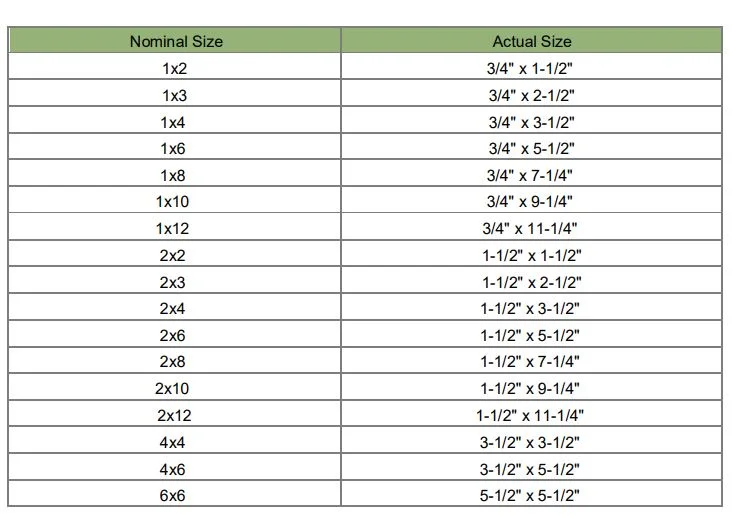
Imperial/Metric Conversion Chart

Important Notes:
Use a countersink drill bit to pre-drill ALL holes before inserting screws to avoid splitting the wood and make the screw heads sit flush with the wood.
There may be slight differences in the path of the screws to avoid encountering two screws that are close together.

Before you put the screw on the tip of the drill while doing the screwing operations, you should make a circle on the top of the wood for the screw entry by drawing a circle with the
drill bit itself. If you do this, the piece of wood will not crack.
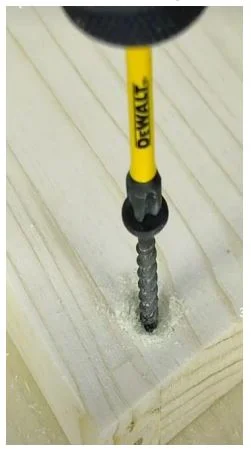


Tips:
To screw any wood screw without damaging the wood, you can heat the screw with a lighter for 4-5 seconds and then screw it in.




Instead of screwing directly as shown in the picture, it is a much better method to first insert a wood drill rod into the tip of the drill and drill a screw hole by drilling the wood.
Then you can do the screwing process without damaging the wood.
Wood painting information:
First, sand the wood with 150 grit or higher sandpaper to achieve a smooth, even surface before staining.
Thoroughly remove all dust from the wood by using a vacuum with a hose attachment, then wipe clean with a damp cloth.
Then wiping clean with a damp cloth. First, apply Pre-Stain Wood Conditioner to the boards.
Apply the Pre-Stain Wood Conditioner and allow it to penetrate the wood for just 1-5 minutes, then remove excess conditioner that has not soaked into the wood with a clean rag.
Apply Water Based Wood Stain to all of the wood. You can the color Desert Sand mixed and the color Pure White mixed. What I love about the water-based stain is
1) how easy clean-up is…
2) how little odor the stain has…
3) the colors.
You can get everything from bold, colorful shades to neutral wood tones to light, creamy cottage and ocean-inspired stains.
Apply the stain using a foam brush, and allow it to penetrate the wood no longer than 3 minutes.
It is very fast-drying, so work in small sections! Wipe the wood with a clean cloth to remove any stain that has not soaked into the wood. Allow the stain to dry 24 hours before applying a protective finish.
Tip: It will be easier to wear a pair of gloves while wiping the excess stain to keep our hands clean than to wash our hands.
After the stain has dried 24 hours, apply a thin coat of Water Based Polycrylic (I used the clear matte finish) using a brush.
Allow to dry at least 2 hours, then sand with a very fine 220 grit sandpaper and remove all dust.
Apply a second and third coat, drying and sanding in between each layer. The wood will need 3 hours to dry before handling and 24 hours before it will be fully cured.
If you've ever used polyurethane on top of white paint and seen the yellow stains that appeared once the poly dried, you know how important it is to make sure you're using the right topcoat.
* If you wish, you can create different beautiful results with your own color choices. I prefer to use these colors mostly for coffee tables. But beautiful colors will look good anywhere.
Side View:

Front View:

Top View:
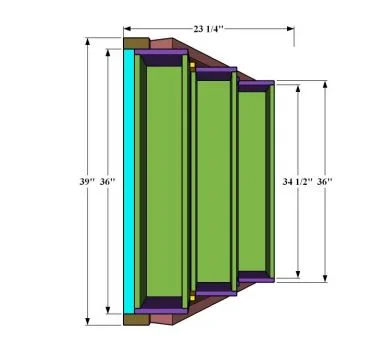
Bottom View:

Assembly Process:
Step 1:
First, we glue the B1 (2 x 4 x 36 ″ ) piece to the back of the inside of the A1 (2 x 4 x 34 1/2″ ) leg so that there is no gap and screw it.
Then we place the second leg on the other end of the B1 piece in the same way and screw it.
Then, we place the K1(2 x 4 x 24 ″) pieces, which are the floor support pieces, on the lower inner part of the leg and screw them from the inside. We use 2" screws in both processes.

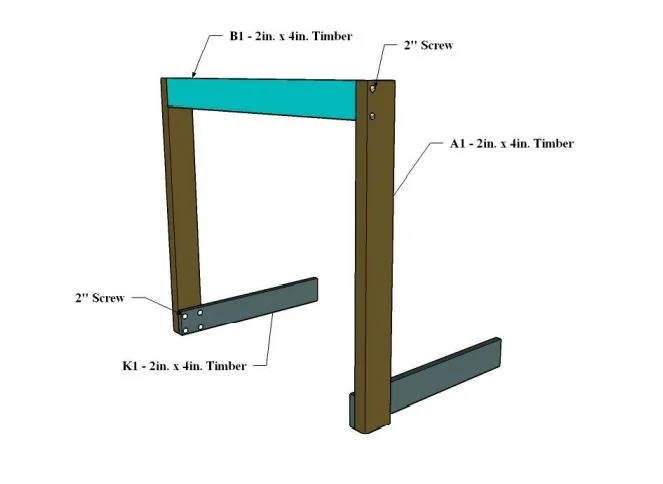
Step 2:
Now we start making the planter boxes. We place and glue the C1(1 x 8 x 34 1/2 ″) pieces on the front and back ends of the D1(1 x 8 x 8″ ) piece so that there is no space on the outside.
Then we screw it in from the back. We use 2" screws. We repeat this process for 3 planter boxes.


Step 3:
Now we place and glue the bottom (E - 11 x 8 x 34 1/2 ″) of the planter box so that there are no gaps. Then we screw in two from the sides and ten from the bottom.
You can reduce or increase the number of screws. Again, we use 2" normal screws.
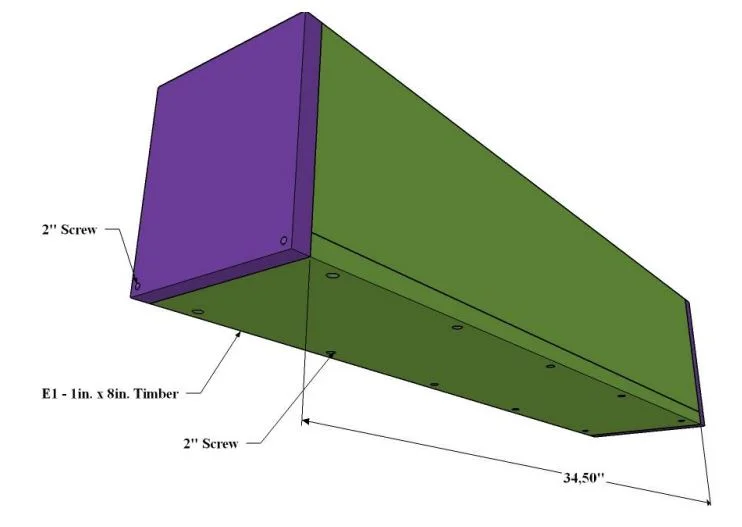
Step 4:
At this stage, first of all, we place the flower pot box that we have completed before, in line with the B1 back support piece, and glue it. Then, we make 3 screwings from the upper right side of the leg.
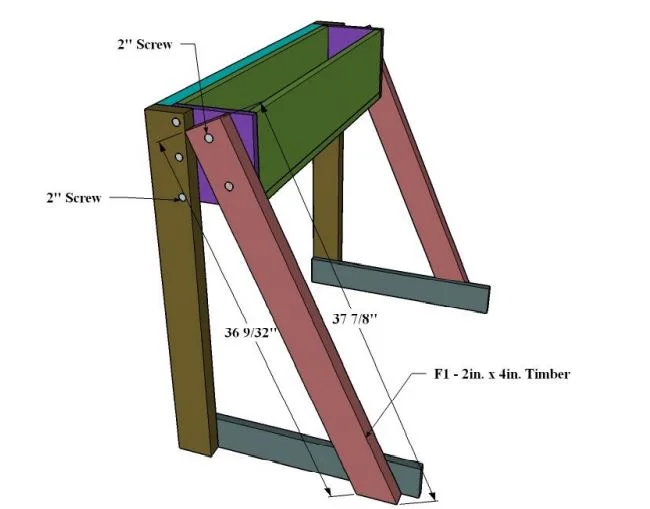
Now we measure and mark 1 19/32'' from the tip of the 37 7/8'' long piece F1(2 x 4 x 37 7/8″). If you wish, you can also mark and cut by measuring 24.4 degrees from the tip of the leg with the protractor.

Now, join the F1 piece that we cut off to the A1 leg, create a 24.4 degree angle down with the protractor and mark the left part.
If you wish, you can do this by measuring and marking a 17/16'' distance down from the A1 leg and placing the left part of the F1 piece at that point as in the figure.
After sticking the F1 part to the contact surfaces, screw it up and down with 2'' screws.


Step 5:
Now, place the G1(1 x 4 x 9 1/2 ″) part, which is the bottom support part of the planter box, on the inside of the A1 leg and screw it on from the contact surfaces..
We are screwing from both the A1 leg and the F1 piece.
Then we place the H1(1 x 4 x 8 ″) part vertically on the bottom of the G1 part and screw it in from the inside. From above and below. Here we use 1 1/2" screws.
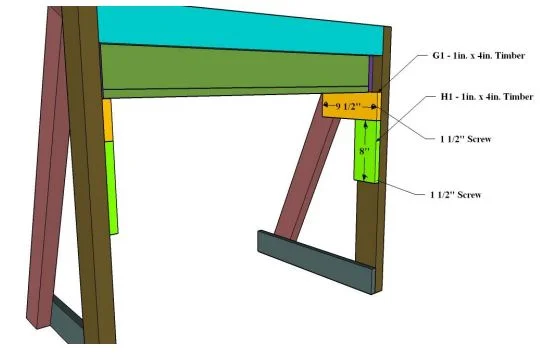
Step 6:
Now we place the second planter box on the lower end of the H1 part. The second planter box as shown in the picture should be placed at the end of the C1 part.
After gluing, we make three screws from the outer parts. The higher the number of screws will make it more solid.


Step 7:
Now we place piece J1(1 x 4 x 16 3/4 ″) on the inside of the A1 leg and glue the bottom support piece of the second planter box as well and screw it in from the contact pads. Then we place the H1 piece on the bottom and screw it in from the inside. Here we use 1 1/2'2 screws.

In the third planter box, we place it on the tip of the J1 piece as in the previous process and
screw it from the contact surfaces.


We have completed our Project


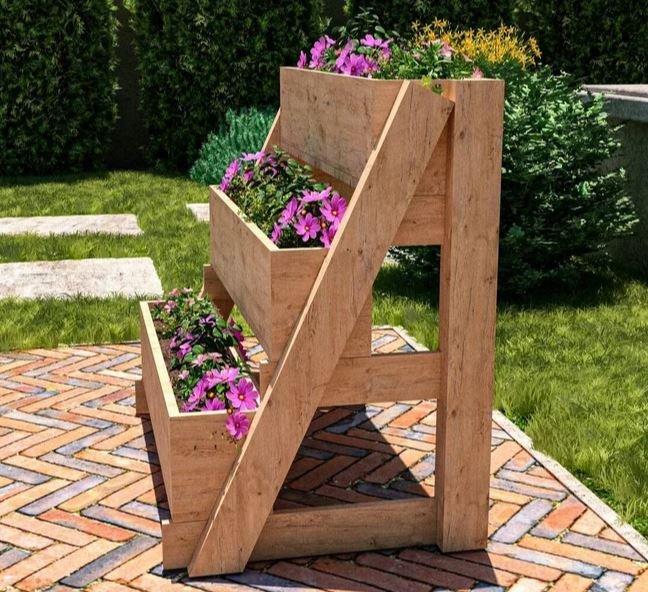

* Not only it's simple and easy to build, but its attractive look also fits well into nearly any space, style, or decor.
* You can save about %50 of the cost by building this 3 tier raised planter box by yourself instead of purchasing it from the store.
